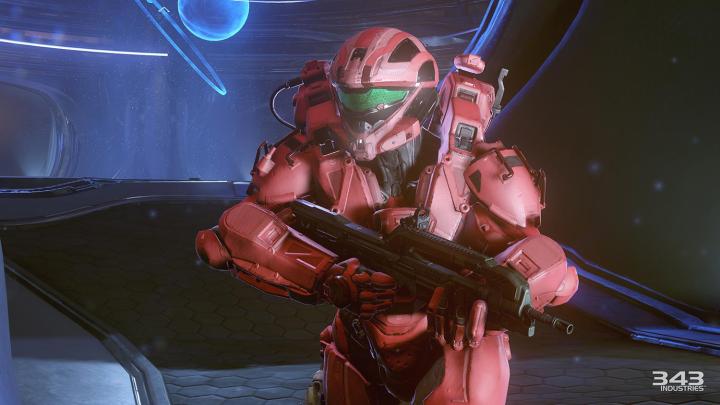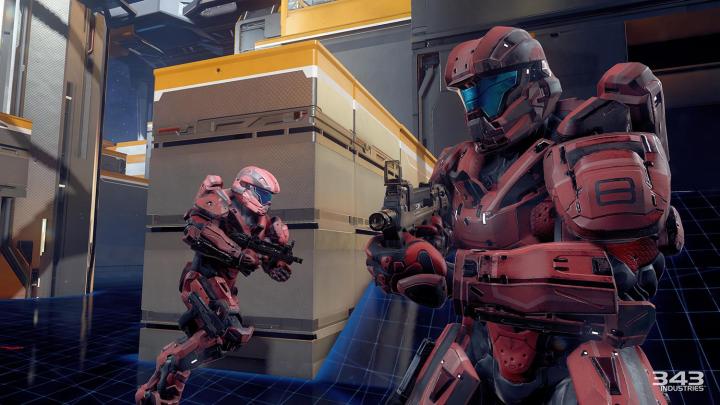
“I call it our 343 Avengers.”
That’s Quinn DelHoyo, multiplayer designer on Halo 5 Guardians for developer 343 Industries. He’s referring to the studio’s small group of pro players, superhuman Halo fans assembled for the express purpose of fine-tuning the competitive component in Master Chief’s next grand adventure.
“We wanted to bring in ‘The Team’ to really solidify our plans and help us make an eSports game,” DelHoyo explains. “So we basically put feelers out there and talked to them because we know them personally. It was a recruiting process, trying to figure that out.”
“We’re detecting skill levels better, we’re tracking it over time better, we’re presenting it to players better.”
“They’re integrated into the team, but we try really hard not to have them be truly converted to ‘game developer’ because we want them to be that vocal fan,” DelHoyo says. “So if we have something in the game that can be exploited, they’re gonna use it because it’s in the game. And then we get to make the decision, ‘Is that a bad exploit or is that kinda turned into a feature? What do we do with that?’”
“They find that stuff for us way faster than we could have done without them. They are dedicated. It is their job, not just to break the game and test it, but to really put it through its paces. How deep is this game? How high can players go?”
The trick for 343 is balancing the desire to build a multiplayer experience worthy of eSports with the need to deliver fun for as wide an audience as possible. The key to that is Halo 5 Guardians‘ new Combat Skill Rating, a matchmaking algorithm that measures player skill levels in a way that is meant to ensure fair, competitive matches, which is something of a holy grail for multiplayer-focused games.

“We’re detecting that skill better, we’re tracking it over time better, we’re presenting it to players better, and that’s going to result in better matchmaking and better competition in the matches.” That’s 343’s Chris Lee, director of production on Halo 5 Guardians.
“I think the pro team has really helped bring back the high end of some of [Halo’s] gameplay, and really makes sure there is that skill gap. We need to preserve a skill gap. Our game still has to be really accessible and playable for everyone so we can make sure that players of all skill levels can have fun,” he says.
DelHoyo adds, “We have people, their whole job — and we didn’t have this on Halo 4 — their job is to make that [CSR] system, and to make matchmaking better than it’s ever been.”
“Our game still has to be really accessible and playable for everyone.”
There’s still a wildcard that needs to be addressed, however. Assuming it works as advertised, CSR promises to create more evenly balanced competitive matches for individual players. But what happens when an Xbox party enters the arena? How does CSR account for a group of people spanning multiple recorded skill levels?
343 isn’t saying yet. It’s not really a secret; the team just hasn’t worked it out. Data gathered from the beta is a critical missing piece when it comes to answering questions like that.
“We’re collecting all that data from matches, how fair and competitive the matches are,” Lee says. “And there’s an algorithm that we’re going to tune over time to make sure that we do solve that problem. There’s a couple different ways we could approach that, but we really haven’t decided the final implementation [and won’t] until we see how we do in beta.”
“This is the advantage of having [the beta] so early,” he adds. “We want to collect all that stuff, and then we want to actually use that in active development to tune as we go. I think we’re gonna have a much better matchmaking experience and much better gameplay, tuning, all that stuff. We’re gonna take a hard look at all of those things and make sure we have everything dialed in.”






